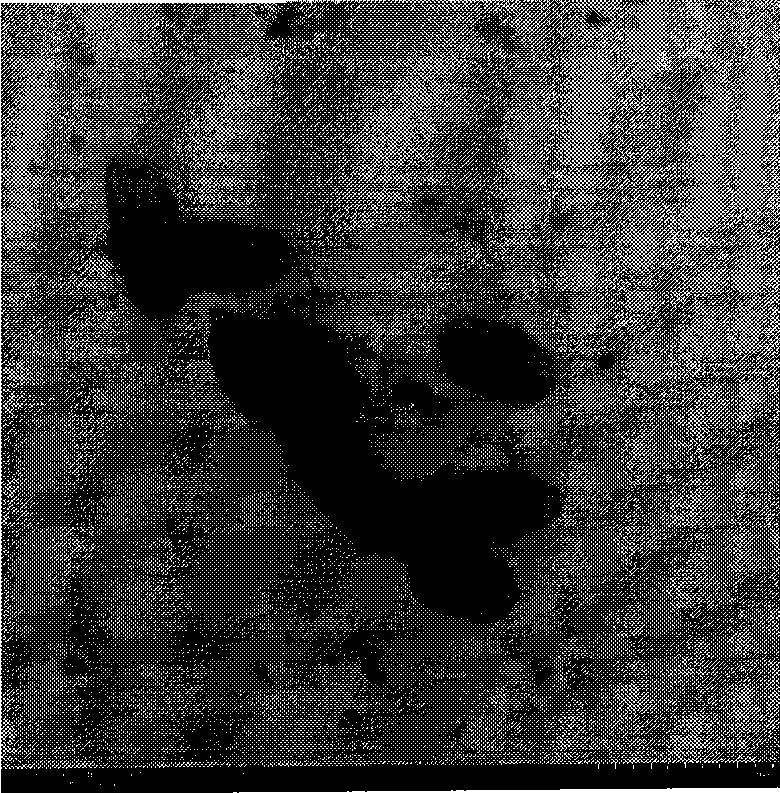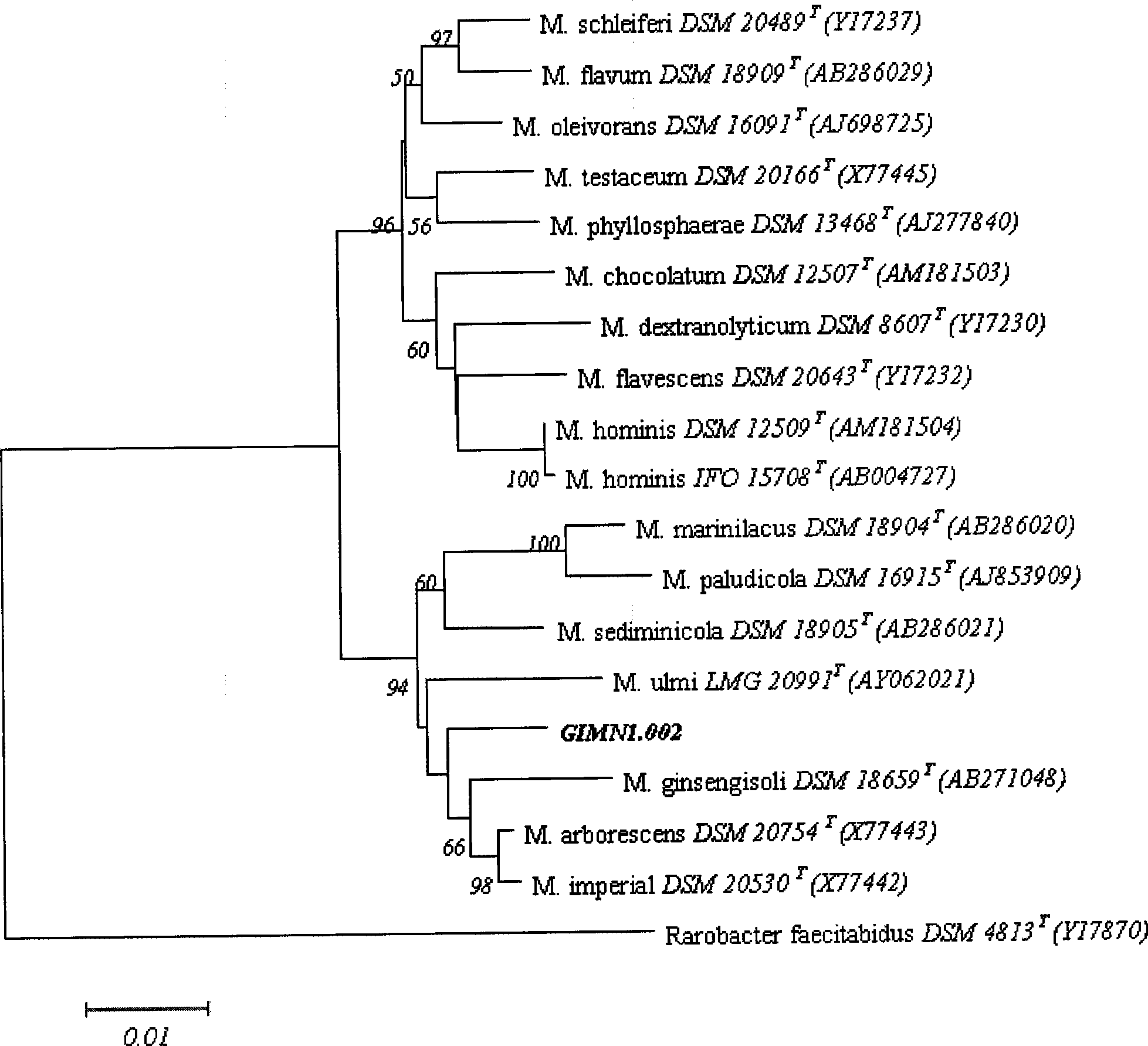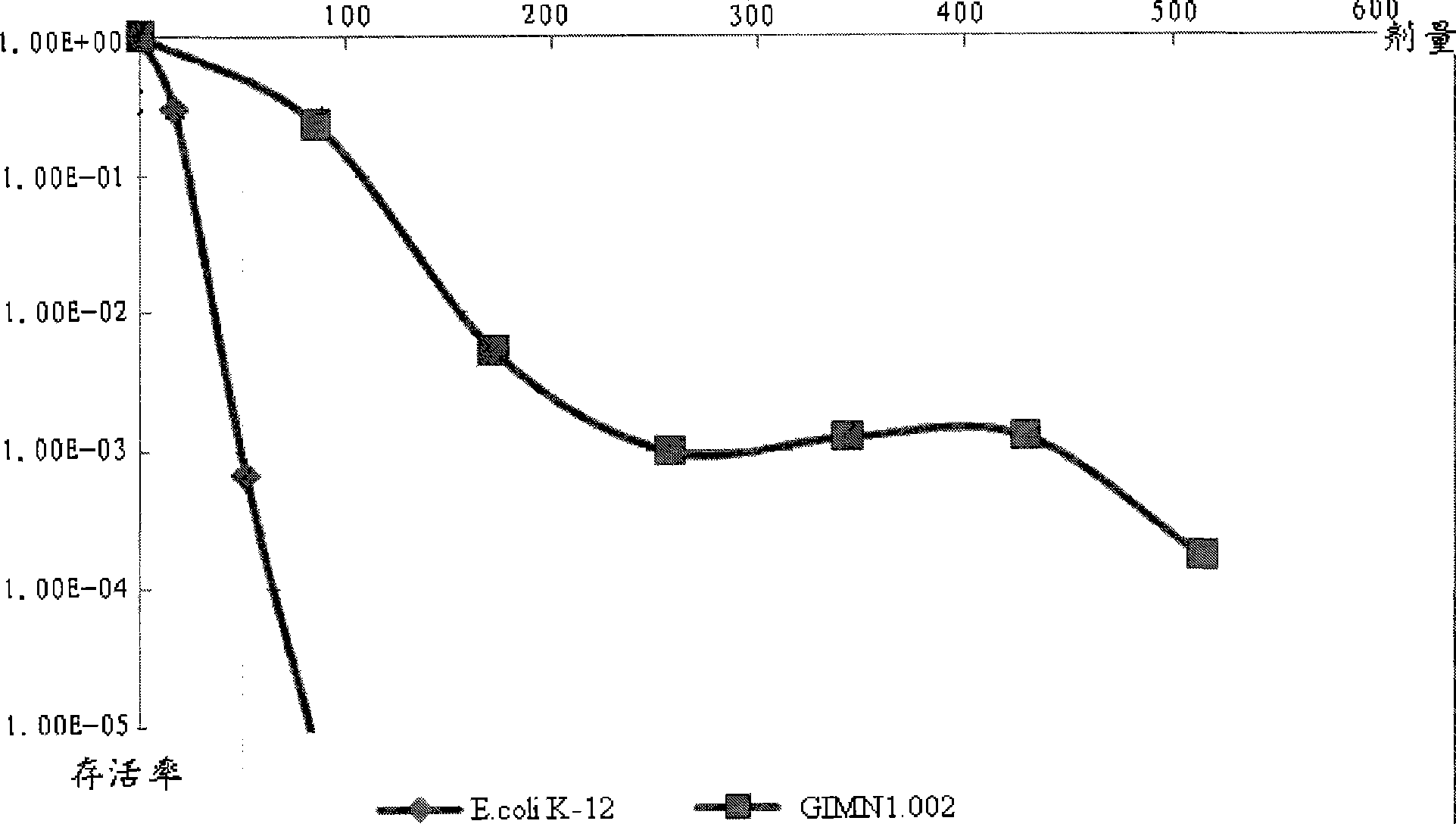Radiation resistant microbacterium and use thereof
A technology of radiation resistance and microbacteria, which is applied in the field of microorganisms, can solve the problems that the research on radiation-resistant microorganisms started late, and there are no new species or genera of extremely radiation-resistant microorganisms, and achieve the effect of strong resistance to ultraviolet radiation
- Summary
- Abstract
- Description
- Claims
- Application Information
AI Technical Summary
Problems solved by technology
Method used
Image
Examples
Embodiment 1
[0022] Excavate soil samples from the soil in Xinjiang nuclear radiation areas, take 10g of soil and put it into a triangular flask (with glass beads) filled with 90mL sterile water, shake it at 180rpm for 30 minutes, let it stand for 10 minutes, and take the upper layer to dilute After 10 times, take 0.1mL and spread it evenly on the nutrient agar medium plate, turn the plate over and place it in a 28°C incubator and cultivate it for 2 days to obtain Microbacterium radiodurans GIMN1.002.
[0023] Medium: Use nutrient agar medium. The specific formula is: peptone 10.0g, yeast extract 5g, sodium chloride (NaCl) 5g, agar 20.0g, water 1000ml, pH6.8~7.0;
[0024] Culture temperature: 28°C.
[0025] Radiation-resistant Microbacterium Microbacterium radiodurans GIMN1.002 of the present invention has the following microbial characteristics:
[0026] 1. Morphological characteristics
[0027] The strain GIMN1.002 has small colonies on the plate, the surface is smooth and translucent...
Embodiment 2
[0039] Embodiment 2: 16SrRNA gene sequence analysis
[0040] 1. Rapid preparation of PCR template DNA
[0041] The bacterial strain obtained in Example 1 was streak-inoculated on a plate of NA medium, and cultured overnight at 30°C. Suspend a single colony in 10 μl sterile distilled water, heat in boiling water for 5 min, centrifuge, and take the supernatant as PCR template DNA.
[0042] 2. PCR amplification of 16SrRNA gene sequence
[0043] PCR primers were synthesized by Shanghai Yingjun Company.
[0044] PrimerA: 5'-AGAGTTTGATCCTGGCTCAG-3'
[0045] Primer B: 5'-AAGGAGGTGATCCACCCCCA-3'
[0046] PCR reaction system (total volume 50 μl): 5 μl of 10x buffer, 4 μl of dNTP (2 mmol / l), 1 μl of PrimerA (10 pmol / l), 1 μl of PrimerB (10 pmol / l), 0.4 μl of Taq enzyme (2U / l), DNA Template 1 μl, sterilized ddH 2 O 37.4 μl.
[0047] PCR amplification conditions: 94°C for 5 min; 94°C for 1 min, 58°C for 1 min, 72°C for 2 min, 30 cycles; 72°C for 7 min.
[0048] 3. Sequence determina...
Embodiment 3
[0050] Embodiment 3: Determination of the resistance to ultraviolet radiation of the radiotolerant microbacteria of the present invention
[0051] Inoculate one ring of the radioresistant Microbacterium radiostrain of the present invention into a liquid nutrient medium (NA medium without agar), culture on a shaker until the logarithmic phase of growth, and collect the bacteria by centrifuging at 5000 rpm for 10 minutes at 4°C; Bacteria were resuspended in an equal volume of 0.1M potassium phosphate buffer (pH 7.0) (K 2 HPO 4 27.816g, KH 2 PO 4 10.608g, dissolved in 1L of distilled water, sterilized at 121°C for 20min), then collected by centrifugation at 5000rpm at 4°C for 10min, and resuspended in an equal volume of 0.1M potassium phosphate buffer (pH 7.0).
[0052] Place the bacterial solution in a Petri dish and stir it with a sterilized iron wire to make the bacterial cells uniform. Place the petri dishes at 0~500J / m 2 Under different doses of ultraviolet irradiatio...
PUM
 Login to View More
Login to View More Abstract
Description
Claims
Application Information
 Login to View More
Login to View More - R&D
- Intellectual Property
- Life Sciences
- Materials
- Tech Scout
- Unparalleled Data Quality
- Higher Quality Content
- 60% Fewer Hallucinations
Browse by: Latest US Patents, China's latest patents, Technical Efficacy Thesaurus, Application Domain, Technology Topic, Popular Technical Reports.
© 2025 PatSnap. All rights reserved.Legal|Privacy policy|Modern Slavery Act Transparency Statement|Sitemap|About US| Contact US: help@patsnap.com



